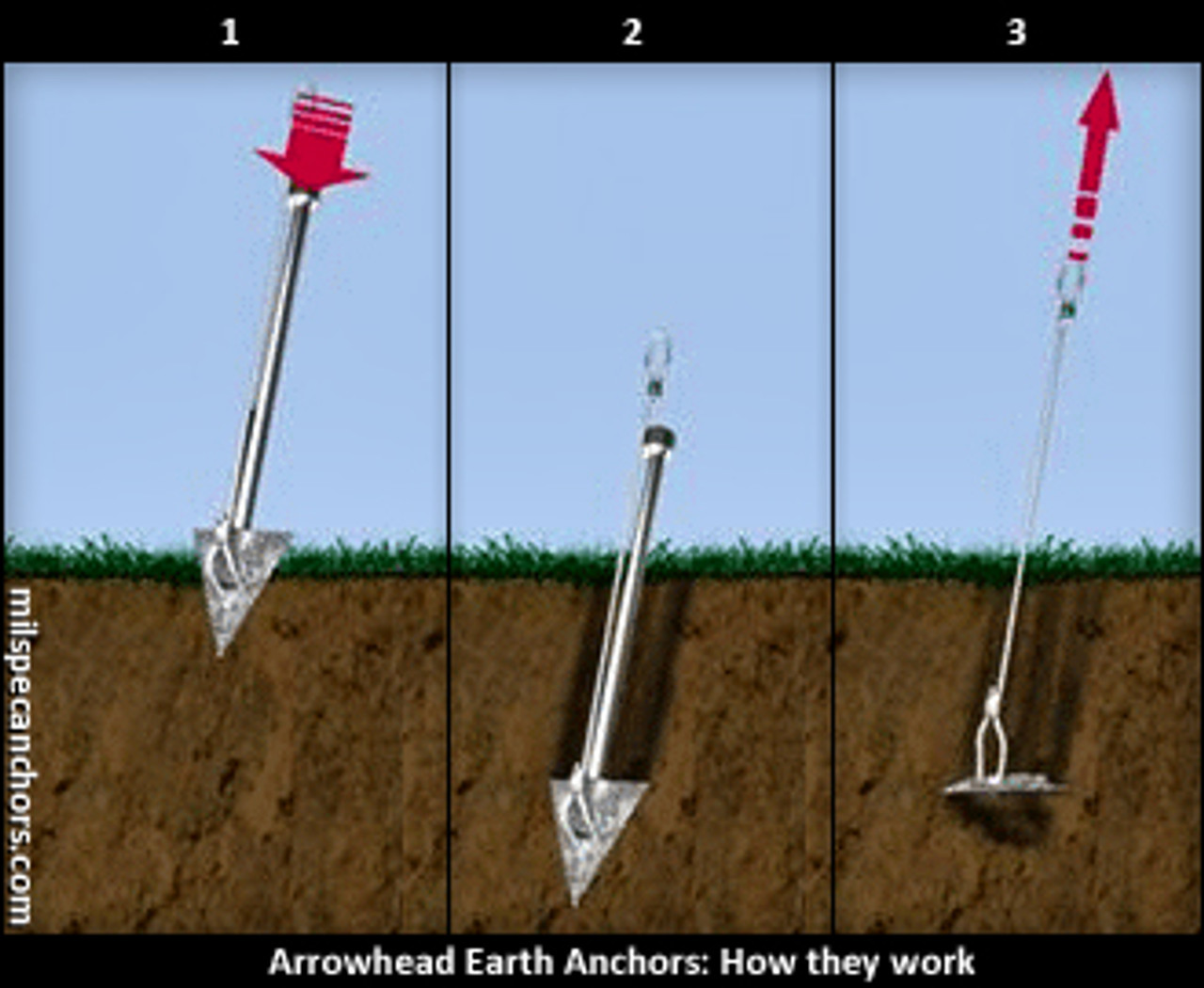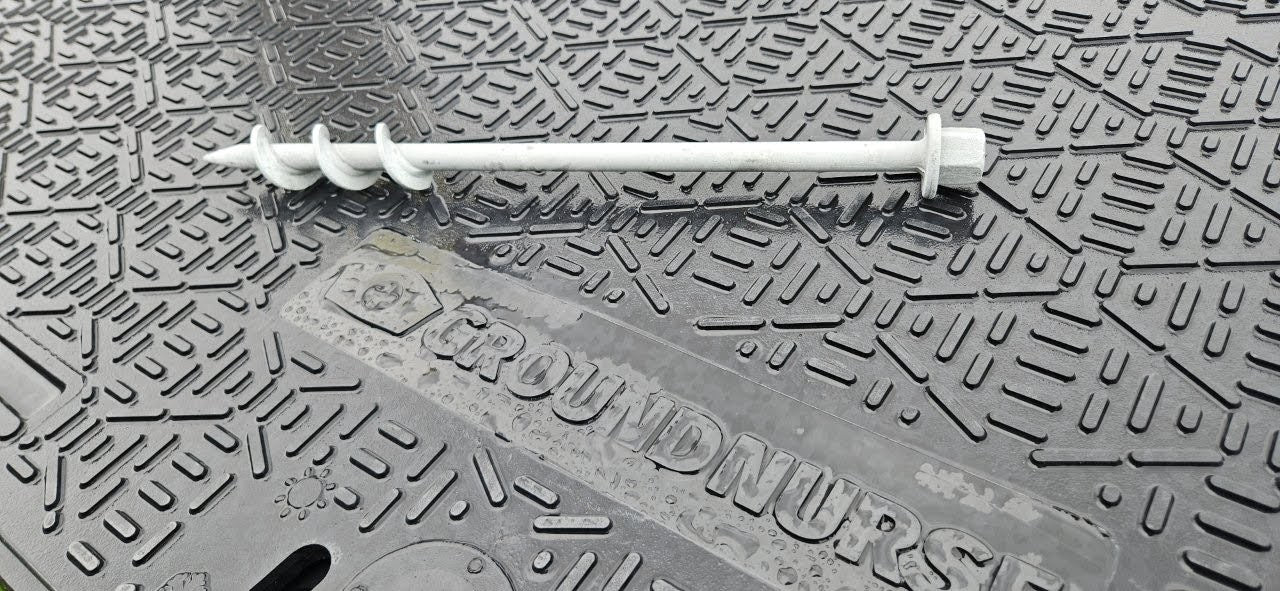Contractor-Approved Methods to Secure soil anchoring solutions with Minimal Disruption
Wiki Article
Just How Durable Earth Anchors Work: A Comprehensive Guide to Dirt Anchoring Solutions
Heavy-duty Earth anchors play an important role in giving stability and support in various building and construction applications. By embedding deeply right into the ground, they stand up to vertical and lateral pressures effectively. Various kinds of anchors provide to various dirt conditions, making them flexible. Understanding their mechanics and installment techniques is crucial for making best use of efficiency. What aspects influence their efficiency, and just how do they contrast to typical techniques? The solutions might surprise you.Recognizing Durable Earth Anchors
Durable Earth anchors work as important elements in numerous construction and landscaping tasks, offering stability and support in tough dirt conditions. These anchors work by being embedded into the ground, where they resist upright and side forces. Their layout permits for secure accessory to frameworks, guaranteeing they continue to be secured versus dirt activity or exterior loads.The effectiveness of sturdy Earth anchors mostly depends upon the kind of soil and the support's installment deepness. Appropriate setup techniques are important, as they figure out the support's holding capability. Environmental elements, such as wetness and freeze-thaw cycles, can likewise impact performance.These supports are frequently made use of in applications varying from safeguarding fencings and preserving walls to supporting short-term structures throughout damaging climate condition. Comprehending the principles behind heavy-duty Earth supports is crucial for specialists looking for to improve the toughness and security of their projects.Kinds of Heavy-Duty Earth Anchors
Various kinds of sturdy Earth anchors are developed to meet certain demands based on dirt conditions and project demands. Helical anchors, featuring screw-like blades, are reliable in softer dirts, using high load abilities and easy installment. Driven anchors, which are hammered right into the ground, are appropriate for rocky surfaces and supply immediate lots support. Tie-back anchors are generally utilized in retaining wall surface applications, permitting side support by securing into the ground at an angle. An additional type is the cast-in-place support, suitable for concrete applications, as they are incorporated into foundations for boosted stability. Soil screw supports are versatile options that can be made use of in various soil kinds, providing trustworthy stress and compression abilities. Each kind offers distinct applications, making sure stability and security in building and construction and landscaping jobs. Recognizing these choices permits for informed decisions in choosing the ideal Earth anchoring option.The Mechanics of Dirt Anchoring

Recognizing the technicians of soil anchoring calls for an assessment of different sorts of Earth supports and their installment methods. Each anchor type provides unique attributes that affect its performance in various soil conditions. Appropriate setup techniques are essential for making the most of the securing system's security and efficiency.
Sorts Of Earth Anchors
Earth anchors, necessary parts in dirt anchoring systems, been available in several types, each developed for certain applications and dirt conditions. One of the most usual kinds consist of screw supports, which are twisted into the ground, offering strong lateral resistance. Helical anchors feature blades that allow for efficient installation in various soil kinds, making them ideal for both temporary and permanent applications. Driven supports, commonly made from steel, are inculcated the dirt and are reliable in rough or dense atmospheres. Auger anchors utilize a helical layout to assist in setup in softer soils. Plate anchors consist of a level plate hidden horizontally, distributing tons over a larger location, suitable for applications requiring high load capacities in natural soils.Installment Methods Discussed
Proper installment methods are vital for the performance of dirt anchoring systems. The process generally starts with site analysis, verifying the chosen place can sustain the anchor's load. After determining the right anchor kind, proper opening depth and angle have to be established. The installment includes driving the support into the ground utilizing specialized devices, such as hydraulic or hands-on chauffeurs, to accomplish best embedment. Post-installation, tensioning the support is vital to assure stability; this is commonly verified with lots screening. Additionally, bordering dirt problems need to be kept an eye on to prevent displacement. Adhering to these methods not just enhances the support's efficiency but likewise extends its life expectancy, offering trusted support for various applications.Applications of Heavy-Duty Earth Anchors
While sturdy Earth anchors are commonly connected with construction and landscaping, their adaptability extends to a variety of applications across different industries. In civil design, they give essential support for retaining walls, making sure security in locations susceptible to dirt disintegration. The aquatic field makes use of these supports for securing docks and marinas, avoiding motion triggered by currents and trends. Furthermore, in the telecommunications industry, durable Earth anchors are substantial for maintaining cell towers and other tall frameworks versus wind pressures. Agricultural applications additionally profit, as these supports can protect structures like greenhouses and animals fence, guaranteeing they hold up against severe weather. Furthermore, in renewable power jobs, such as wind farms, Earth supports play a vital function in protecting wind turbine foundations, enhancing total safety and performance. This broad array of applications highlights the flexibility and dependability of heavy-duty Earth supports across numerous fields.Benefits Over Standard Anchoring Methods
Although traditional anchoring approaches have long been counted upon for security, sturdy Earth anchors supply considerable benefits that boost efficiency and efficiency. One significant benefit is their premium load-bearing capacity, which permits them to stand up to greater pressures without failure. This stamina makes them ideal for demanding applications, such as in construction and energy installations.Additionally, heavy-duty Earth see this site anchors are created for deeper installment, providing higher security in numerous soil problems, consisting of loose or sandy soils. Their resistance to deterioration and environmental aspects ensures a much longer life-span and minimized upkeep costs contrasted to traditional methods.Moreover, these supports can be mounted with minimal disturbance to the surrounding location, maintaining the integrity of the landscape. In general, durable Earth supports present a effective and reputable remedy for anchoring needs, surpassing the limitations typically connected with conventional anchoring methods.Setup Process and Finest Practices
The setup process for dirt anchoring services starts with thorough preparation and site evaluation to ensure peak efficiency. Following this, a step-by-step installation guide offers clear directions for efficient implementation (tensile load anchors). Adhering to these finest techniques is important for achieving resilient and reputable anchoring resultsPrep Work and Website Analysis
Reliable preparation and comprehensive site assessment are vital steps in the installation of dirt anchoring remedies. Before setup, the dirt kind must be assessed to identify its bearing capacity and viability for anchoring. Performing a geotechnical survey can supply crucial information about dirt composition, dampness levels, and potential ground movement. In addition, identifying existing frameworks, greenery, and energies is vital to avoid disturbance during installation. The location ought to be free from debris and barriers to assure risk-free access for devices. Weather conditions ought to additionally be kept an eye on, as adverse problems can affect both safety and security and installation effectiveness. By meticulously preparing the site and evaluating all appropriate factors, the possibility of effective support efficiency is considerably boosted.Step-by-Step Installment Guide
A thorough installment procedure is important for accomplishing excellent performance of dirt securing solutions. The installation begins with picking the suitable anchor kind and assuring the website is free from debris. Next off, proper opening placement is figured out based on lots demands. As soon as the area is established, holes are drilled to the defined deepness and size making use of the correct devices. The anchor is then inserted into the opening, seeing to it it is lined up properly. After protecting the anchor, dirt is backfilled and compacted to enhance stability. It is important to adhere to maker standards throughout the procedure. A post-installation inspection validates that the anchors are effectively positioned and operating as planned, giving trusted assistance for the designated application.
Upkeep and Inspection of Earth Anchors
Normal maintenance and assessment of Earth supports are necessary for guaranteeing lasting performance and stability. Routine checks permit the very early detection of issues such as rust, loosening, or dirt movement. Examiners must seek indicators of rust or deterioration on the anchor components, especially at the link factors. Additionally, the bordering soil needs to be assessed for erosion or adjustments in wetness content, which can affect support effectiveness.It is advisable to establish a regular evaluation timetable, preferably at least yearly, depending on environmental problems. Throughout inspections, all noticeable components must be cleansed to get rid of dust or debris that might conceal possible troubles. Any indications of distress, such as turning structures or unusual settling, should trigger immediate analysis. Proper paperwork of assessments can help in monitoring support performance over time and help with timely maintenance actions, making certain the supports remain trusted and functional.Frequently Asked Questions
What Materials Are Heavy-Duty Earth Anchors Commonly Made From?
Durable Earth anchors are generally built from resilient materials such as galvanized steel or stainless-steel, making sure stamina and resistance to corrosion. her response These materials provide check my site resilient support and stability in different soil problems and applications.Exactly How Do Soil Problems Impact Anchor Efficiency?
Soil conditions considerably influence support efficiency. Elements such as soil type, dampness web content, and compaction affect the support's hold and stability, with natural soils often supplying better resistance than loosened or sandy soils, influencing overall performance.
Can Heavy-Duty Earth Anchors Be Reused After Elimination?
Durable Earth supports can be reused after elimination, supplied they are inspected for damages and wear. Correct cleaning and maintenance enhance their long life, making sure effective performance in succeeding installations when problems enable safe reinstallation.What Are the Ecological Influences of Using Earth Anchors?
The ecological impacts of utilizing Earth supports consist of potential soil disruption, interruption of neighborhood communities, and feasible contamination of groundwater. If utilized sensibly, their benefits typically surpass these concerns, promoting security in various applications.How Do I Select the Right Anchor for My Job?

Report this wiki page